|
It felt crazy to be up so early! Up so late? It was hard to tell. But Baloo and I were ready to go by 1:30 am.
Baloo had the hard job. I planned to fall asleep in the backseat. Sadly, I could not sleep as I was wide awake. So I tried to keep Baloo entertained for the 4 hour journey. Baloo played Hindu songs to keep himself awake. It was going to be a long journey. After an uneventful drive, we arrived outside the gates around 5:30. The sun was not yet up, so I would make it to see the sunrise! My guide met me - PK - and we headed for the complex. Cows and monkeys were roaming around the entrance so you really hadn’t to watch where you walked. It’s hard to explain how I felt as I approached the site. I had been so looking forward onward to seeing wing this man justice mausoleum that I wasn’t sure if it would meet my expectations. But I can say that this is one of the he most beautiful places that I have ever visited! It takes your breath away! You have seen all the photos, but they don’t do it justice. I almost cried. The story behind it reflect so the love of a man for a woman. Shah Jahan built the site as a Memorial to his second wife, Mumtaz Mahal,who died while giving birth to theirs 14th (!!!) child. The poor first wife got a small consolation crypt near the gate. when Mumtaz died, the emperor was so distraught that he decided to build this memorial to her. Construction for the site began that same year. Mumtaz was Persian (from what’s is now Iran), and a Persian architect designed the site. The emperor invited the architect to bring all the craftsmen (and their families) from Persian. Although the main building was built in 8 years, it took 22 years for the complex to be completed. Not long after it was completed, Shah Jahan was overthrown by one of his sons (who killed his four brothers) and imprisoned for the rest of his life at Agra Fort. For the rest of his life, he could watch over his wife from the windows of the fort. A sad love story. The Taj Majal is now a World Heritage Site and looks as amazing today as it did when it was built. It went through a large renovation project in the early 20th century, and was “cleaned” around 2002. The Government has realized the value of this site and now controls pollution within hundreds of miles of the site. They do this through preventing any manufacturing in the vicinity and prohibiting polluting vehicles in the area. One of the things that you are warned about before you arrive is that there are lots of “photographers” on the temple grounds who are willing to take your pictures for a fee. Once you have committed to one, he will follow you around and tell you how each photograph should be staged, and then sell you the results at the end. Luckily, PK served that role for me! He had me pose at all the standard locations and took the photos on my phone. You have the pleasure of seeing far too many pictures of me at the Taj above. PK was a wealth off information. He helped to explain the architecture and lol the symbolism scattered throughout the complex. I don’t understand not wanting to use (and pay!) a guide when this person adds value. One of my frustrations with the tour company was that’s I was promised a guide every day, but did not have one until I arrived at the Taj Majal. So I saw many places, and was able to read the limited data available nearby, but I had to make assumptions about whether I was even in the right spot! It is very frustratingly as I will likely never return to this city! I try to move on... We spent about 2 1/2 hours at the Taj Majal, then PK took me to a place for breakfast. It wasn’t great... Our next stop was the Agra Fort. This fort is still used by the Indian military so tourists are only allowed to access about 25% of the site. I was so excited to have PK with me to explain the various parts of the fort. Each of the five emperors of the Munghal Dynasty who ruled the area had his own palace within the fort. We were only a lemon to see the section in which the Shah Jahan lived and spent his house arrest. It was a beautiful location to be held prisoner. When we finished at the fort, it was time for PK and I to part company. It was only 12:30 or so, but I was exhausted! Baloo took me to my hotel so I could rest, and we made a plan to view the sunset over the Taj Majal from the far side of the river. My hotel had a beautiful rooftop pool and restaurant, so I had a bit of lunch before my nap. Sadly, I could only sleep for two hours, but that seemed to be enough. I went downstairs to meet Baloo for a drive to the park. Sadly, it was cloudy, so it was not much of sunset. But I am glad to have seen it Overall, the Taj Majal and the city if Agra exceeded my expectations. Seeing the Taj Majal in person will remain a highlight of my travel experiences. I a man looking forward to seeing what else this country has to offer! Day 2 began with a pick-up from my driver, Baloo, who would be my only companion for the next three days. He let me know that we had a long drive ahead of us - at least 4 1/2 hours - so I should just relax. Good thing that I always travel with books! Staring out the window would try my patience, which is really not my strong suit. The drive had the added bonus of a variety of creatures along the road.
You have heard about the cows - it is true that they are everywhere! Which means you always have to watch where you walk. The really sad thing is that although the Hindus worship them as gods, they do not appear to be addressing some of their basic needs. These cows do not live in fields where they eat grass all day. They are living in the concrete jungle which is the city. So they rely on trash for their food. This could turn many people into vegetarians. In addition to the cows, there are goats, monkeys, and dogs everywhere. The dogs are not treated as pets. They are wild dogs who forage for food (they all appear malnourished), many of them carry diseases, and they look like they either nursing puppies or mating with other wild dogs. My guide told me that Hindus believe that dogs can see the devil’s face so they want nothing to do with the dogs. The government could help themselves by running a massive spay and neutering campaign! The roads are terribly crowded, as cars share the road with trucks (many of which appear to be overloaded and on the verge of over-turning!), tuktuks, bicycle rickshaws, and motorbikes all competing for space. Everyone is honking, as if to let their neighbors know that they are passing by any means necessary. It makes for an interesting drive. As we approached Jaipur, the Pink City, I saw two camels along the side of the road. Not much later, I saw an elephant and rider heading towards me. Both of these animals offer rides to lazy tourists who do not want to climb up to the palace and the fort. The government has recently given one concession to the animals and only allows rides in the mornings so that the animal should can rest during the hottest oft infant the day. But it still seems cruel. My guide pulled over as the base of the Amber Palace. I expected to have a guide meet me to take me through, but this was more of my “rookie tourist mistake”. The tour company had lied to me and would not return my phone calls. So I was on my own. It was hot! I live in Atlanta, grew up in Houston, and have lived in New Orleans, so I should be used to this! But this was intense. Climbing up to and through the palace and on to the fort (Nahargath) in the “humid season” left me looking like I had been swimming! I was invited to be in many more selfies (I bet those look nice!) and was offered a ride on the back of a motor bike up to the top. I declined. I spent about 2 hours in the palace and the fort. There is not much to share but I am glad that I saw it. By the time I left, I was really hungry. Luckily, Baloo knew a place with truly amazingly Indian food. It was the first I had since arriving in India. Yum! After lunch, we continued our tour of Jaipur. The two highlights were the Hawa Mahal (The Palace of the Winds) and the City Palace. The Hawa Mahal is a five-story facade covered with hundreds of windows. The ladies of the court used these windows to watch processions while keeping their faces hidden. For me, the most interesting thing about the City Palace is that it shows what happens if you don’t stop people from feeding pigeons. This beautiful building is covered with birds, which means that it is covered with bird droppings! Really gross - not just smelly but you had to worry about getting hit from above. I didn’t stay long. As Baloo and I talked about our plans for that evening and the next day, I realized that his schedule was off. He planned to take me to the Taj Majal on Saturday morning. I explained that we needed to go on Friday as I was flying to Kerala on Saturday morning. Baloo then told me that the Taj Majal is closed on Friday - every Friday - as this the day that the Muslims come to the temple to pray. Now I was angry! And I realized how poorly the tour company hadn’t handled my situation. The primary thing I wanted to do in India was see the sunrise at the Taj Majal. Now it appeared that this was not going to happen. The tour company was still unwilling to take my call! Then Baloo made an offer that I could not believe. If he could have some time to take an evening nap, we would leave at 1:30 and he wouldn’t drive through the night to have me at the Taj Majal for sunrise. I almost cried! After a good bit of discussion as to whether this would be a safe journey, and whether Baloo was truly up for this drive, we decided that this was to be our plan. We parted ways after committing to call each other at 1 am to make sure we were up. I went up to my room, took two Tylenol PMs, and went to bed by 7:30. It was going to be a long day tomorrow. I had mentioned photos, but forgot to add them.
The Memorial itself is moving. Lots of school children were visiting at the same time as me. This is where I first learned that I am going to “Star” in many people’s photos as the “Middle-age day white woman”. I don’t love selfies, but you cannot turn down the kids (is this what Taylor Swift experiences???”) Something that I found interesting about the Memorial is that many world leaders have planted trees in Ghandi’s honor in the garden surrounding the Memorial. These two stood out - Ho ChiMinh and Nicolas Ceausescu. Ghandi advocated for non-violence, but these two practiced the opposite. Strange contrast. These are some photos from my first hotel in India. What more could I expect for $23/night? I could have slept anywhere afternoon two long flights. Even with the upgrades (thank you, DTF!), I was ready for real sleep. So I took a bucket shower - the shower head was not functional) and crashed. Very early the next morning, I was awake so I decided to headed into the city (I had been advised to stay at a hotel near the airport sincerely my flight had arrived so late). I took my first TukTuk of this visit to the Metro. This is where I first realized how heightened security is in India. I passed through a metal detector, my bag was scanned, and I proceeded through the “ladies’” scanner. Women and men are always separated at security checkpoints. The Metro was easy so I made it to Connaught Place and decided to have coffee before I took my second TukTuk of the day. Then I headed to my hotel. The check-in staff was polite, offered me some local beverage (tasted like sweetened fruity water), and tool do me that my room would be ready in 30 minutes or so. Would I like for them to take me to the tourist office while my room was being prepare? What a lovely idea! I am a sucker!!! This is a travel rookie mistake! I was too tired to be focused, so let’s just at I WAY overpaid for a tour that I did not want. And even though it has been three days since I did so, I am still mad at myself. Trying to “Let It Go!”, as Elsa would say. The driver took me back to my hotel. I checked into my room and changed clothes for a day of touring Delhi. Our first stop was the red fort. However, in order to get there, I took my first (and - hopefully -only!) bicycle rickshaw through the crazy streets of Delhi. I spent about an hour in this area, taking in the sights, seeing the mosque, visiting spice market, and then had a rickshaw ride back to meet my driver. It’s best just to ignore what is going on around you whenever on one of these things. My driver then took me around to see some of the highlights of the city, including the Lotus Temple, Himayun’s tomb and the monument to Mahatma Gandhi. A few photos from that memorial(called Raj Ghat) are below. The highlight of the day involved a visit to Swaminarayan Akshardhan. I don’t really know how describe it other than to say that it has Hindu temple elements, a water/pyrotechnics show (which may sound cheesy but really wasn’t!), and a boat ride that reminded me of something from Disney. All of this was to pay tribute to and tell the story of Swami Akshardham, who lived in the 18th century and is now revered as a god. I spent 3 1/2 hours here and plan to return at the end of my trip. There are no photos as cameras are not allowed on the premises. Before I close out the first day, I will mention that I found it sad that I had to go through security screenings every time I entered an attraction. And there were guys with big guns posted all over the city. I guess that this is a way of life here. I wasn't supposed to travel in 2018. After spending 7 weeks traveling around the world in 2017, I needed to stay at home and focus on my business. So what was I doing 5,000 miles from home? It turns out, I can be easily persuaded if the right opportunity comes along. A bit of background - a friend from Rotary, KC, went to Sierra Leone 3 1/2 years ago, at the end of the Ebola outbreak. She went with a Georgia-based non-profit that started a school in Wellington, Sierra Leone, over 25 years ago. This program was a great fit for her talents - providing education support to children with learning disabilities. It was her first trip to Africa, and it's safe to say that she fell in love. With the country, with the people, and with their hope for the future of the country. She decided to start a non-profit working to boost education for the children of Sierra Leone. Unlike many others who make such a commitment, she followed through and Education Cures was born. Over the next few years, I followed KC's adventures as she set up the program and I could see the joy that this work brought to her. I decided that if I ever had the chance, I would join her on one of these trips. Perhaps in 2020... In mid-February, KC mentioned that she was taking a group to Sierra Leone over the Memorial Day holiday. It seemed implausible, but I mentioned that if my tax bill was not as bad as I anticipated, I might consider the trip. Then I forgot about it. KC did not. The next week, she mentioned to me that I could save money on the trip if I were to do a home-stay with a fellow Rotarian in Sierra Leone. And this Rotarian happens to be the husband of a friend, and someone who I know and admire. It was harder to come up with excuses. The last hurdle would be the cost of the plane ticket. But I have lots and lots of Delta Skymiles. Isn't this what they are for? By the end of March, I was committed and starting to get excited about the trip. This would be my sixth trip to Africa, but I knew very little about Sierra Leone other than that the country had recently emerged from the Ebola outbreak. Friends were skeptical about the idea of traveling to this country, but I could see how KC's face lights up every time she talks about this place. So I began to do the research on what I needed to do to prepare for the trip (Yellow Fever vaccine - check!) and planned my itinerary. As the departure date approached, I learned one of the most important aspects of traveling with Education Cures - you only get to take one suitcase with your things. Your other bag will be used for carrying the school supplies and clothes that are delivered to the program. To help with filling these suitcases, KC sets up an Amazon wish list with the items that she needs at the school. My very generous friends helped to whittle the list. The trip began uneventfully. There were 10 people in our group, with five of us traveling to Paris a day early to do a bit of sightseeing. Sadly, my Paris visit was mostly rained out so there was no real chance to walk along the Seine. We met up with three other Atlanta-based travelers the next day and headed to the plane. Although the screen showed a slight delay, we were boarded shortly and ready for our trip. And then the wait began. Our baggage handlers decided to join the French national train workers in a strike (not sure if those for the ENTIRE airport participated). Right there on the concourse... they refused to load our bags. We could look out the plane window and see our luggage, but no one was making any effort to get those bags on the plane. So we waited - for nearly 3 hours - before the bags were finally on the plane. I was hoping that this would be the only problem that we would have on the trip. We arrived into Freetown quite late. All the various bags were assembled by the porters (only two lost on the trip! Disappointing, but not bad, considering the chaos), and we made our way to the ferry. It's odd to think about the fact that we were actually taking a ferry across a portion of the Atlantic Ocean. Late Saturday night, we made it to our lodging - the bulk of the group in a quaint hotel and me nearby at a generous Rotarian's house. Sunday was going to be a busy day. KC had arranged cars and drivers for our stay. Having made six previous trips to Freetown, she understood the importance of having well-maintained and rugged vehicles. Previous trips had involved many flat tires and broken down cars, which hampered the work that the group was doing. A really nice feature of these cars was air conditioning! It is very humid in Freetown. I met up with the group at their hotel, and we all headed out to church. I knew that this was going to be very different than my traditional Catholic Mass and I was really looking forward to it. We arrived in time to join in some dancing before the service began. I was already soaked with sweat by the time we were seated. The service was lovely and lengthy. There was lots of singing and dancing, recognition of special guests (which included us!), and sermons. Many of the locals speak Krio, a language that sounds similar to English, but really is not. Most of the prayers were said in English, and then translated to Krio, which added to the length of the service. About two hours into the program, a lady brought out sandwiches for the foreigners. It was very thoughtful, but I don't think any of us were craving white bread with mayonnaise and Spam. I gave my sandwich to the little girl sitting next to me. She seemed to like it, but thought it was very messy. I offered her some toilet paper to use as a napkin (I never travel without it!) and she seemed fascinated with the fact that my toilet paper could be separated into squares. This reminded me again how travel exposes you to so many different perspectives... After three hours, the service ended and we all made our way outside to cool off. I couldn't wait to eat! KC had picked a restaurant for our post-church meal. She had warned us that you really should not order off the menu, but to ask what the restaurant actually has. It was a good lesson for our first day. We all ate, and I returned to my house and fell fast asleep. Monday was our first day at the school. I was excited to see the place and figure out what I would actually be doing. This would answer the question that I had been asked since I announced that I was taking this trip - as a non-educator, what would I actually be doing? The great thing about a project like this is that if you keep your eyes open, you can quickly figure out something that needs to get done. KC was great with allowing us to explore the school and take ownership of a task. She did ask that we help here with "Brain Jogging", which is a cool set of tools designed to help young children learn to read. Our job was to hold their little heads so that they would move their eyes across the screen, not their heads. This was one project that we did every day. As SBP, a fellow Atlanta Rotarian, and I began to explore the compound, we quickly realized that there were a lot of projects to tackle so we needed to focus on one. The library was an easy place to start. The SLIMS library was full of books, but nothing about them was approachable. The front section was full of textbooks, randomly shoved onto the shelves. As you moved further back into the library, you would start to sneeze and cough because of all of the dust. I believe that having a library is such an important part of the school, but there had to be a better was to present the books! SBP and I quickly determined that many of the items on the bookshelf were not useful. Someone had sent nearly every National Geographic since 1932 (seriously!) - these were still bound with string, in piles on the bookshelf. There were 32 copies of a fashion and merchandising textbook (I think 1 copy would be fine). There was a book on beating Minecraft (these children do not have video games!). There was book on re-building a 1987 transmission. You get the idea - lots of filler, but the good stuff (picture books and stories) were stuffed in the back. We started with a purge - in order for children to use these books they would have to be able to find the ones of interest. And those that would never be reviewed could be sent to other places, or destroyed. We wanted to present a clean library that invited discovery. It was interesting to see how people responded to our projects. Books that had not been touched for years (as the dust could attest!) became desirable. We were happy to give books to anyone who wanted them, and we found that accounting text books were in high demand. One unanticipated result of cleaning out the library is that we were able to provide more space for computers. Many generous patrons had provided us with new laptops to take along on this trip to give to the school. Now that there was space, these laptops could be laid out for regular use, and the educational software that we had brought along could be used regularly. All of the computer donations meant that we could run more children through Brain Jogging. You could see the advancement in the children every time they put on the headset. The children were starting to understand the basics of reading. Many of the children also need to learn to speak up and so during Brain Jogging, they wear a device that looks like a headset. But it really designed so that the child can hear him/herself speak the letters or the words. Brain Jogging takes place in two main steps: the first is letter recognition. Two or three letters are flashed on the screen. The child is then asked which letters s/he sees and asked to state the letters loudly. It is important that the adult supervising the child not correct the child if the letters spoken are incorrect - educators reading the reports can see which letters are incorrect and how the letters are read to help determine if a child has a learning disability. The second step involves having an adult hold the child's head in place while the child looks at a computer screen. Words or phrases are then flashed on the edges of the screens. Each child is then asked to say the letter or letters that s/he sees on the far left and the far right side of the screen. The key is that the child needs to move his/her eyes, not the whole head. Success with this type of program requires repetition. KC worked with the teachers to help them understand the importance of the exercise and the need to incorporate this into the regular curriculum. Since SBP and I were largely on our own to identify the projects that we could address, we really wanted to see the classrooms. This was quite eye-opening. We were visiting during exam time for the older students. SBP and I walked through the upper school to see what was taking place. In one classroom, we walked in while a teacher was switching all the children in a particular row! It was really hard to watch. The switch came down hard across the backs of children's heads and their arms. I had to walk out of the classroom. The teacher realized that what she was doing was making us uncomfortable so she stopped. But the image was ingrained in my brain. I do remember in my early primary years that I had one teacher who hit us with a ruler if we were not paying attention in class, but this kind of discipline is now largely frowned upon in the US. SBP and I went back to the office and told KC what we had seen. She too was unhappy that this was taking place at SLIMS. Fortunately, she is in a position to do something about this in the lower school, so she implemented a policy that switching was not allowed with her students. Period. It was interesting to hear teacher feedback about the new policy. The consensus is that Sierra Leone children need switching in order to discipline them. They are taught this in the universities and it will take a change of attitude for this to catch on. But KC made a great observation - any teacher who cannot maintain control of a classroom without switching has no business being responsible for children. A highlight of the trip was being able to visit two different Rotary clubs in Sierra Leone. We went to one evening meeting which was really a Zumba class! KC, SBP and I had planned to merely watch the class, but we got caught up in the fun! This particular Rotary has Zumba as one of their meetings each month, which is a great way to promote "being active" with your fellow Rotarians. I am not sure that this program would go over well in the Buckhead Rotary. The second Rotary meeting involved quite an adventure just getting to the meeting. The facility was no more than 5 miles away, so allowing one hour for travel would have seemed like MORE than enough time! But we were wrong... we arrived nearly a half an hour late and missed most of the social part of the meeting. The members were more than gracious and did not charge us the typical late fee (designed to raise money for local Rotary projects). The last big project that SBP and I undertook was cleaning out the bookcase in the kindergarten classroom. It was a mess! SBP and I took EVERYTHING out and sorted the items by type. The biggest challenge was taking two bins of puzzle pieces and deciding which puzzles to keep! The best way to handle this project was to make this a joint operation with the teachers. We took all of the puzzle templates and laid them out across tables (about 44 in all). Then we dumped all the puzzle pieces into piles where we then proceeded to try to rebuild the puzzles. Any puzzles with missing pieces were then "given" to children to take home to their families. KC wanted the teachers to understand that we need to show the children that we do not think that they deserve junk. They deserve only complete puzzles. It really sends a powerful message. A summary of this trip would not be complete without mentioning some of the children who touched our hearts. KC fell in love with Mohamed on her first visit. At that time, he had a cataract on one eye so he was not attending school. KC found him a doctor to remove his cataract and then gave him the encouragement he needed to start learning. He is now one of the children in SLIMS who shows how much can be accomplished in the right learning environment. And he makes everyone around him feel loved. I will admit to finding my own child to love. His name is Ibrahim. I saw him one day while I was wandering around SLIMS and noticed him because he has the biggest smile! We started to talk and I asked him if he liked books. He said that he did so I took him in to the newly organized library. He read a few books to me and then I encouraged him to bring one home with him. The staff in the library actually discouraged me from doing so as they said that I would never see the book again. So what if I didn't? I explained that if he kept the book in his home, he could re-read it again and again. The books in the library were there to be read - not put away to take up space! On our last day in Sierra Leone, we had to stay close to town. The new president of Sierra Leone had decided that all the roads in the country would be closed until noon so that they could be cleaned. This seemed like a crazy idea so I was intrigued to see how this would work.
The road closures had an interesting effect on all the people. They used this as an excuse to clean out their houses. As we walked around, we saw whole families sweeping and removing junk. Not sure where all of this was going to end up, but it was fascinating to witness. We decided to walk over to a nearby orphanage to meet the staff and the children. Sierra Leone is an interesting country as they still allow international adoptions - and these adoptions are encouraged! The country survived a civil war and an Ebola outbreak, so there are many children who need families. In SLIMS, I witnessed how the entire community helps to "raise" the children. It really does take a village. Back to the orphanage - I have visited and worked in many orphanages around the world. They all tend to have the same smell and atmosphere. But not this one. It was incredibly clean and all of the children appeared to be helping each other. The older children were helping with the little children, and all of them were helping with the children who have disabilities. It was a wonderful last look at the people of Sierra Leone. To my friend KC, I am very grateful that you allowed me to join you on this trip. You are doing great work here and I look forward to visiting again. After spending the morning on my cycling tour, I was ready to go to Zimbabwe. Although I had seen Victoria Falls from afar, this was my opportunity to get up close.
Getting across the border is an interesting process. I had made sure to get a multiple entry visa when I entered Zambia so I was not concerned about my return. But I would have to pay a fee to get into Zimbabwe. My first taxi was able to take me to the border and helped me to negotiate the fare for the small portion of the ride that is in "no man's land" - essentially, this is the area over the Zambezi river and is not technically part of either country. I got my passport stamped for my departure and thought " this is pretty easy!" Not really true. My $2 taxi (Zimbabwe uses US dollars as their primary currency because their own currency became worthless not very long ago) took me across the bridge where I could see the bungee jumpers waiting to launch. Not happening! As I drove across the bridge, it was interesting to see the HUGE line of trucks waiting on both sides of the border! My taxi driver explained to me that it can take 3-7 days to get through border control in a truck. What a waste of time! I am not sure what causes the delay, but I was told that you can "buy" your way to a better place in the line. So much for the Foreign Corrupt Practices Act that we embrace in many Western countries. If you want to operate in this area, you either pay individuals to move you up the line (we call these "bribes") or you waste your time sitting at the border. My taxi dropped me off at the Zimbabwe border and I was impressed that the line was not very long. Sadly, this was deceptive. The local tour operators skip the lines completely and step to the front of the line to have their guests expedited. The patrons don't even get out of the cars. I was stuck with all the regular folks waiting to be processed. It was interesting to see that one of the women who was working in the customs office had a shirt with the embroidered logo "I am not corrupt". It was a bold statement but it made me wonder about those not wearing the shirt. I submitted my paperwork and waited as many, many tour guides ignored the lines to get their guests approved. My recommendation to anyone who is not traveling to this region on a budget is to get a guide, if only to expedite your process in the lines. After about 90 minutes, my name was called! They returned my passport and I was finally able to get into another taxi for the last 3 kilometers between me and my hotel. I arrived at Shearwater Adventures and went to check in. My hotel room had been booked far in advance as I knew that I would want some luxuries after my volunteer work in Zambia. I remembered seeing photos of the infinity pool when I looked online.... As I checked in, the clerk asked me if I was staying in the "dome tents". I said no, remembering the photos I had seen on Hotels.com. The clerk looked up my reservation and stated that I was in the domed tents. Perhaps I should have paid a bit more attention as I was booking. The tents were not bad. I actually had a cot and a bit of space. No lights, and certainly no air conditioning. Good thing it was winter. The bathrooms are communal, which is not fun for someone who just cannot make it through the night without a break. I think I was now ready to go home. The primary reason that you come to Victoria Falls is all of the outdoor activities. I went to the lobby and started reviewing the brochures to figure out my options. Bungee jumping was definitely out. I wasn't even that thrilled about whitewater rafting. I had done this before and it might have been fun if I was not traveling alone. But I did sign up for an early morning hike into the Zambezi gorge and for a sunset cruise on the Zambezi for the next night. Since my activities were now set, I found a place for dinner and decided to read for a while. It was going to be an early morning and it actually got cold at night. By the time I went to bed, I was too tired to be bothered by sleeping in a tent. I woke early the next morning and went to find my guide. We were going to start out hiking with the whitewater rafters and then split off when they entered the river. It was pretty cold as we started out, but I knew that it would warm up as we hiked. The first part of our climb involved going down VERY steep steps. I took my time as I could easily see that it would be a terrible fall if I missed my step. Rafting guides were passing me with deflated rafts on their backs and carrying paddles. It made me nervous - so I guess I really am getting old. We made it into the gorge and found a great spot to watch the rafters take off. Several of the rafts overturned on the first rapid so I was glad to be on the shore. We did get a chance to get into the Zambezi but it was not really a swim. The coolest part is that we ended up under the bridge where the bungee jumpers were leaping. I got to see two people take part, and my perspective was really amazing. But it did not give me any motivation to try it... We hiked out of the gorge and our guides rewarded us with beers. A nice way to start the morning. After returning to our lodge, I showered and decided to explore the town. It's not much - lots of places selling tourist trinkets, and aggressive salespeople explaining that my purchase would be the first sale in weeks! Yep- I have a few souvenirs. I spent a good part of the afternoon at a restaurant on the edge of the Zambezi, watching people do zip lines and something called a "gorge swing". This actually looked intriguing, but also terrifying. As I listened in on groups who had friends and families participating, I started to think that maybe I could give it a try. But I was sure that it would be expensive and that would give me an easy way out. After almost 7 weeks of travel, I was confident that I was already over budget. But before I left to meet my sunset cruise, I inquired about the cost. $90 didn't seem so bad, so perhaps I would consider this for the next day. The sunset cruise was really nice. I sat at a table with a local and his two teenage children. The children study in England because the education in Zimbabwe is so poor. The father lives in Victoria Falls and runs a lodge. It was nice to get a local's perspective on the country. We were in a fairly small boat - it probably held about 40-50 people. They served us snacks and unlimited cocktails while we sailed along the river. We came upon a herd of elephants - easily 20 in all - who were drinking along the shore. We passed a "bloat" of hippos, one of which made sure that we saw all of its teeth. Seeing the hippos reminded me of a story that I had just heard. My sister had visited Zimbabwe some years ago and raved about taking a canoe trip down the Zambezi. So I looked into one of these for my trip, but I didn't really have the time to make this worthwhile. In discussing this option with one of the guides in Zambia, he shared a story with me. Two weeks before my visit, two women had been doing a canoe trip on the Zambezi with a guide. The canoe was capsized by a hippo (they are VERY territorial) and the hippo bit off one of the women's legs! She had to be airlifted out. My guide in Zimbabwe confirmed the story, but explained that these types of stories never make the news. The two primary sources of income in Zimbabwe are diamonds and tourism. If stories of incidents on tours get out, fewer people will visit. Note to self - avoid hippos. As we were heading back to the docks, we saw a "tower" of giraffe. It was pretty cool to watch them along the river as the sun set behind them. This boat trip was definitely a highlight. The next morning, I decided that I was going to try the gorge swing. My seatmates from the sunset cruise had told me that they had really enjoyed it (one had also done bungee jumping and he did not like that!). I wished that I had friends along to give me a bit of encouragement, but I was confident that I would step off the platform! I went back to the restaurant where I had spend the previous afternoon. It was odd to see warthogs grazing in the front yard of the restaurant, but this is Africa, after all. I paid my fee before I could chicken out, then headed over to the starting point. It was really, really high! The company offered a video of the event, which I declined, but I had to have pictures, didn't I? So I gave them $35 for emailed photos to commemorate the event. They strapped me into several different harnesses, and I could feel my heart racing! I was hooked in from the moment I approached the platform, and they moved me from one set of hooks to the next until I reached the edge. Holy smoke - was I really going to do this? The guide said "1, 2, 3..." and I stepped off! For the first few seconds, you are truly free-falling (thank you, Tom Petty!). And then the ropes catch, and you are really swinging. It was such a cool feeling, and I really did cry. I couldn't help it - I was so proud of myself for actually doing this! Maybe I am not that old after all... The guides pulled me back to the side, and I rappelled up to the platform. I think I was still crying when I was finally unhooked. It was awesome! I had an adrenaline rush and I was thinking about other activities that I might do for my last day in Zimbabwe, but I needed some money. So I went to the ATM. The nice guard smiled at me and told me that all the banks were out of money. Seriously! And since this was a bank holiday, as was the next day, they would not get money until Wednesday (today was Monday). It is pretty scary to be in a foreign country with NO ACCESS TO MONEY! I had been traveling for 6 1/2 weeks so my US dollars were mostly gone. I had $11 to my name. I realized that I had enough money to get to the border, but not enough money to do anything. I went back to my hotel to pick up my bags and asked if perhaps the hotel would give me money on my credit card. The clerk told me that anything I needed could be obtained with a VIsa. I countered with the fact that the taxis don't take visa, and the guides rely on tips (the tour companies are all owned by Western companies who pay the guides poorly, so tips are their primary source of income), but the clerk had no sympathy. I was really glad to be getting out of this country. I found a cab to take me to the border, and then decided to walk across so that I could stop and watch the bungee jumpers. It was really cool to see the jumpers go off the platform, especially now that I had seen them from below. One of the vendors offered to trade me for a t-shirt, so I gave him a Peachtree Road Race shirt in return for a bowl (sure, I needed this!). And then I went to a restaurant on the Zambian side of the border to watch more of the adventurers. It was nice to have lunch (they took Visa), but I forgot to pay attention to the wild monkeys. One of them stole my French fries! I had one day left on my adventure, so it was time to head to my last hotel. Last stop - Botswana! My final destination on this Around the World adventure was Livingstone, Zambia. Arrived with few expectations. This was not my first visit to Africa - I have been to Kenya, Tanzania, South Africa, and Morocco - but each country is different. I had chosen to go to Zambia because of its proximity to Victoria Falls and because of the volunteer projects available in the country. I was looking forward to doing more outdoor work.
My accommodations in Livingstone were really quite nice. I was in a guesthouse with nine other volunteers, and this time I had my own bedroom and bathroom. Yay! As we were all getting settled in, we decided to walk into town. It seemed close and there was nothing else to do. We really didn't even know what "town" would be, but we were confident that we could get local currency "Kwacha" and see a bit of the area where we were going to be living for a while. Finding our way to town was easy - in Zambia, most people speak English. But they also speak their local languages and there are 72 different languages spoken in this small country. It provides for very interesting sounds as you move among the locals. All the volunteers speak English, but for many of them, English is a second or third language. I realized how challenging this could be for some people when one of the other volunteers had her ATM card held by the machine because her transaction took too long. She wasn't sure about the meaning of the word "withdrawal". She had to go back to the bank the next day (as this was a Sunday and banks were closed) to claim her ATM card. It clearly happens often as the bank manager pulled out a stack of ATM cards from the machine!. The nice thing about the city center is that it has pretty much everything you need. There aren't as many choices as we have at home, but I found good coffee (so important!) and free wifi. And several interesting restaurants. I could see that I would be walking into town (about 45 minutes each way) quite often. The other volunteers in my house were either working on medical placements (providing immunizations, distributing HIV medications - the estimated HIV rate is 25% of the population! - , assisting with pre-natal care, etc.), teaching, or working in a senior citizens' home. It providing some interesting conversations over meals when we discussed our work days. My project was in construction. In Zambia, education is not free, which means that many children do not attend schools. The organization with which I was working, Dream Livingstone, is building a school that will provide free education to children. I would be working to help build the school. The facility itself was right around the corner from my guest house. The build was scheduled as a five year project, but it looks like it may actually finish in about 2 1/2 years thanks to the work of the local staff and all of the volunteer hours being put into the project. The original plan was to build the caretaker's house first, and then have someone live there while the school is being built. But children started showing up at the facility before the house was even finished so Dream Livingstone revised their plan and began offering classes in the caretaker's home. On the days when I was working, 50-60 children would show up each day for class! Happy to learn and excited to have a place to go. The construction team consisted of two Zambians who led the project, and then six guys and one girl - me. I think I held my own... but it was really hard work! We shoveled gravel and sand, made concrete blocks, cleaned out construction debris, and poured concrete. It was really great to be able to see the progress daily. And I loved being in an environment where the children who would eventually use the school were playing and learning right nearby. I hope to be able to see the finished project someday. My daily routine usually involved waking very early (I never got used to the time change) so I would go for a walk and listen to a podcast. It was cold in the mornings - it is winter in the Southern hemisphere - but got pretty warm in the afternoons. The locals always say hi as you pass them, and the children run up to greet you! It's a pretty special way to start the day. We had a long break in the middle of the day - the construction was really hard work! - and I would usually use that break to go for another walk. And after our project work finished at the end of the day, I would walk into town to explore. I hadn't really paid attention to how much I was walking until I met another volunteer who said "oh, you're the girl who walks everywhere." I guess I was... The great thing about Livingstone is that I never felt unsafe. The people are friendly and eager to talk to you. I got asked for drinks several times (not sure if these were legitimate offers or whether the people were just being friendly) and was often asked to be in pictures with the locals. This was a beautiful place to spend some time. The area in which I as staying was for people of moderate means, but I knew that this is not how everyone in Livingstone was living. I wanted to get a broader perspective of local life, so the Dream Livingstone team suggested that I go to see a rock mine. We asked a staff member to lead us on the "30 minute walk". (Note - when people give you distances in Livingstone, it is always defined by how long it will take to walk there. The estimates given by the locals should be assumed to be shorter than the actual time it will take for you to get somewhere.) After an hour of walking in the heat (it was a particularly brutal day!), we arrived at the quarry. This place puts life into perspective - those of us in the Western world truly won the birth lottery! Had I been born in Livingstone, this very easily could have been my life. The men use metal poles to separate the rocks from the walls - no jack hammers involved. Then the women break the rocks into smaller pieces and the children then separate the rocks by sizes. I watched one woman break down rocks while a baby was attached to her back! Her other child - perhaps he was 2? - was sorting rocks beside her. I always ask before I take pictures of people, but several women asked to have their pictures taken with me. There was a part of me that wondered if I was being exploitive of their situation, but I decided that I was not selling these photographs. Merely using them as a way to capture the experiences of these individuals. As we walked out of the quarry, we were all quieter than we had been when we arrived. There were some children playing in the area - using tires as toys - and they smiled and yelled "misuno" (sp? it means white person) as we walked by. When I approached the street, a man holding an American flag asked if we could be photographed together, and I obliged. The walk back to our guesthouse did not seem so hot any more. Since it was my last day as a volunteer, I joined some other volunteers to watch the sunset over the Zambezi river. We went to the Royal Livingstone Hotel, which has the distinctive feature of having wild zebra running around the grounds! Rumor has it that they have giraffe as well, but I never saw them. We got a table on the patio and toasted the week of hard work and watched the sunset. On Saturday morning, I started the day with a cycling tour of Livingstone. Joining me on this tour was a woman from New Zealand who had spent the week working in a senior citizen home. She had some interesting observations about her experience, but expressed gratitude that the woman who runs the home takes such care in her position. Our guides for the day were two locals - one of whom plays football for the Zambian National team. It does not pay well, so he does this job to make a living. We spent four hours exploring Livingstone. We saw another rock mine - it was Saturday so there were fewer people working, but sadly, those who were working were women with children. We also visited a church service - such beautiful music and dancing! The people were truly enjoying the service. Our tour took us through a local village where we met a fisherman who was showing off his catch, which included a fish with nasty looking teeth. The fisherman bragged about his granddaughter who is attending school and so very smart. The cycling company was started by a Zambian national who uses the proceeds to fund his own school. Our tour included a visit to the school, which was packed with children milling about on a Saturday. Each one wanted to have his or her picture taken and then see the picture on the screen. I wished that I could have printed out copies for them so that each could keep a copy. We finished our tour with a visit to a local market. Most of the items sold were fairly common, but there were two products that were unusual. One was dried caterpillars. Apparently, these are popular to eat - deep fried, of course! The other was rocks. Pregnant women suck on these rocks in order to absorb the iron from them. Such a resourceful (literally!) use of something found in nature. We finished out our ride along a road that had wild orangutans along the path. I was told that I would see many, many more wild apes when I finally made it to Victoria Falls- my next stop.  The Red Centre includes Uluru (formerly known as Ayers Rock) and Kata Tjuta is not easy to get to, so it is often overlooked in visits to Australia. But it is the key destination that MA missed when living in this country as an expat. So we added this to our list for our 50th birthday excursion. To truly appreciate these sites, you need to get a brief understanding of the Aboriginal culture. The Aboriginal Australian people in central Australia lived in small communities spread across vast areas. When Europeans arrived to colonize the country, they brought with them diseases that caused dramatic population decline. The British settlers treated the Aboriginal people as nomads with no right to land or water rights, and felt that these people would be happy living anywhere. But the Aboriginal people have strong spiritual and cultural ties to their land, which makes it difficult to relocate and maintain their cultural ties. The Aboriginal people were seen as "unevolved" and there was debate about where they stood in the evolutionary scale between ape and man. This affected how they were viewed and treated by white Australians, and particularly by the Australian government. Although all Indigenous Australians were given the right to vote in Federal elections in 1963, the Aboriginal Australians did not receive the rights to the return of their traditional lands until 1992. It wasn't until 1998 that an inquiry took place into the "stolen generation", the name given to the Australian government forced removal of Indigenous children from their families in a quest to "civilize" them. The Australian government actually issued an apology for their treatment of the people and a concerted effort has been made to make restitution and improve conditions for the Aborginal people. Both Uluru and Kata Tjute are considered sacred sites by the Aboriginal people. This makes it difficult to encourage visitors to the area while still respecting the status of these sites by outsiders. One of the compromises that has taken place is that Uluru is actively marketed to tourists, while Kata Tjuta is not. It might explain why many non-Australians have never heard of Kata Tjuta (also known as The Olgas). MA and I wanted to explore these areas and learn more about their history. We headed out of Alice Springs by midday. You are warned to get gas before you go and to carry lots of water. The highway to take you to these sites goes through long stretches of nothing - lots of grazing land for animals but few roadside attractions. It was going to be a long day of remembering to "drive on the left!". Somehow, we survived... As we were driving, I looked out the window and saw a camel. Yes - a camel. You may not have realized that Australia had camels. Everyone knows about kangaroos and koalas, but someone had the bright idea to import camels to help work the land. So you do see camels in the Outback. As you drive to the Red Centre, you have to watch out of animals on the road. Hitting a kangaroo is quite common, and quite dangerous. This knowledge helps keep your speed in check. Well, this and the fact that Australia has zero tolerance for speeding. I will admit that I had little appreciation for Uluru as we headed into the Outback. Atlanta has Stone Mountain - a big granite rock that you can climb. In my mind, Uluru was very similar. But I was wrong. The first time that I viewed Uluru I realized just how massive it it! The base has a circumferance of 6.2 kilometers so you can see if from a great distance. And it truly is red! We pulled over on the side of the road to get a picture with this rock as soon as we first saw it. It was my first understanding of why people make this trek. After settling into our room (bunk beds! and shared rooms...), we drove out to see the sunset at Uluru. It was as spectacular as I could have imagined. The colors on the rock actually change with the light. But the sun sets quickly and it really does get cold. After all, it is winter in the Southern hemisphere. We had reserved tickets to see a Bruce Munro light installation at Uluru. There are 17,000 lights dispersed across a vast area near Uluru. The view is amazing as there really is no other light interference - just these LED bulbs and more stars that you can imagine. The next morning, we awoke in time to head to Uluru for the sunrise. At this point in my trip, I will admit to being jaded by sunrises, and tired of getting up this early to see something that happens every day! But the sunrise at Uluru was so amazing that I agreed to go watch the same event the next morning. Our big plan for this day was to rent bikes and ride around the base. It was such a beautiful way to see the rock from so many angles! From a distance, the surface looks very smooth. But up close you can see how erosion has created these beautiful patterns on the surface. The ride also gave us a chance to see the various sites that are sacred to the Aboriginal people up close. There are many places where signs ask that you not take pictures of specific parts of Uluru because of their sacred nature. We honored the request and continued the journey. As we approached the end of our loop, you can see a place where you can climb Uluru. The Aboriginal people ask that you not climb Uluru, but they do not prohibit climbing. We did not climb - frankly, in addition to showing respect for the request, it is a scary looking climb! Many people must be rescued from this climb as they can make their way up but not handle the descent. When we had the chance to talk with a ranger about why climbing Uluru is not prohibited, he explained the difficult position this provides to the Aboriginal people. On the one hand, they need the fees associated with the visitors as there is little opportunity to earn money while living in the Outback. Many Chinese and Japanese tourists companies market climbing Uluru as part of their travel packages. So the Aboriginal people just request that you not climb because of the sacred nature of the site, but leave the decision to you. After we finished cycling, our next venture was to see Kata Tjuta for the first time. There was a short hike at the base, and then we planned to watch the sunset on Kata Tjuta. The hike was fairly easy, reflected in the fact that a bride was in here full gown (with hiking shoes!) with her groom having professional photos taken at the site. The sunset was quite different from the one we had witnessed at Uluru, mainly due to the fact that Kata Tjuta is a series of 30+ peaks so there is more variety in the setting. But it was still stunning! For our last day in this area, we hiked through the Valley of the Winds inside Kata Tjuta. It was a very difficult hike, made more complicated by the fact that we both had the wrong shoes for this hike! The views were spectacular, but we were unable to photograph these because both of our camera batteries were dead. Not good planning... Our drive back to Alice Springs was uneventful. I was so grateful that MA had added this destination into our itinerary. I knew very little about the Aboriginal people before I made this trek, and have a better appreciation of their culture now that I have visited one of their sacred sites. MA was leaving me the next day, and I was really sad about this fact! We got along so well throughout our 3 weeks together - no spats at all! But there was still one last stop on my journey. I was off to Africa! We arrived into Darwin early in the morning. It was winter in Australia so a good bit cooler than it was when we left Bali. The Darwin airport is tiny, but it does have showers. What a nice perk!
I needed to get a local SIM card so that we would have mobile access in Australia. Since we had a long layover here, I thought that I would take advantage of this time to get this handled. There were no vendors in the airport, so I decided to set off to a local airport hotel for guidance. The clerk pointed me to a card in the hotel store and it should have been very easy to use. Only problem was that the Telstra web set-up would not accept my hotel address in Alice. This meant that I had to chat with an agent. Not fun. The Darwin airport allows you 30 minutes of free wifi, but you need the wifi to set up the SIM card, and in my case, it took longer than 30 minutes. We had to move to different parts of the airport to ping off separate towers to finally get the plan up and running. I am still not sure why they required all of this information for pre-paid cell service! Most countires are happy to sell you a card and allow you to go on your merry way. This airport downtime gave MA and me lots of chances to observe the goings-on at the airport. Apparently, there had been a serious security breach at the Sydney Airport recently that required an evacuation of the whole airport. This put everyone on alert, so those things that seem like not a big deal on a regular day get heightened alerts. For example, a guy sitting near us left his bags alone while he went to get coffee. When he returned, there were four police officers waiting for him and he was subjected to a great deal of questioning. This guy did not seem to get the fact that the police were quite serious in their concern about his bags. at one point, he asked if he could step way to go pick up his coffee - I thought that lead police officer's head was going to explode! Our flight for Alice Springs left midday, and it was then that I realized that we could have flown directly from Darwin to Uluru (which was our primary destination). MA had planned this section of the trip so she must have had a reason. We arrived in Alice in time to see the sunset at Anzac Hill, a military memorial spot. There are plaques on display that pay tribute to Australian contributions to military conflicts. It also has incredible 360 degree views of the surrounding area. Our first stop for the next day was at the tourist information office. MA had two main sites that she wished to visit - the Royal Flying Doctor Service and the School of the Air - and I was open to anything. We got our bearings and then went to find the Royal Flying Doctor Services station. This is a very cool place! The first thing you see as you enter is a live map showing all the flights in operation at this particular moment. The service covers all of the Northern Territory, an area that has vast distances between people and care. The service provides not just emergency transport, but also primary and pre-natal care to those who do not have access to traditional medical facilities. They also provide medical transport to centers of excellence throughout Australia. Only 20% of the flights include a doctor - most are handled exclusively by highly-trained critical care nurses. The tourist office said that we would spend about 30 minutes at this site, but we were there fo nearly two hours! Our next stop was the School of the Air. I had no expectations for this place but it too was incredible. This site provides live classes to 142 students scattered across 1.2 million square kilometers. Students can start school at 4 1/2 and continue through year 9 of schooling. Classes are spread throughout the day and each child is expected to spend 8 hours per day on his/her education. All students have a local tutor - often this is the child's mother but it may be someone outside the family. All kids come to Alice at least twice per year, and may come as often as 4 times per year, so that they can meet and interact with each other and their teachers. The classes take place via satellite and each child is visible on the video screen. In addition to all of the technical equipment, including the satellite dish, packets of supplies are sent to the children so that they have everything they need to participate fully in classes. The children also receive 30 library books at a time. I cannot tell you how cool this set-up is but we spent more time there then we planned, as well. And we both now have t-shirts showing off the program. Our final destination in Alice was Desert Park. I wish we had had the time to bike out there from town, but that will have to happen on a future visit. Desert Park is an area where the various animals of the Northern Territory are exhibited. It is not like a zoo - many of the animals are in open environments. For example, the bird program uses wild birds that respond to calls (and they know they will be fed!) to show us some of the unique birds that we might see in the area. There is also a place where red kangaroos are housed and you can walk among them (not interact with them, sadly, but I guess they really don't like people). The park closes around dusk. You notice that most cars are off the road by dusk. This is so you don't hit wild animals! There are signs all along the roads to be aware of wild animals. They can do tremendous damage to your cars, and most rental car companies exclude damage caused by wild animals. Scary to think about... We finished out the day with dinner at a steakhouse,. I thought MA would try one of the unusual animals on the menu (kangaroo??) but she stuck with steak. After dinner, we headed back to the hotel. We had a long drive ahead of us as we headed towards Uluru. But the answer to my question in the title of this blog is "yes" - it was worth the detour to Alice. |
Archives
September 2019
Categories |
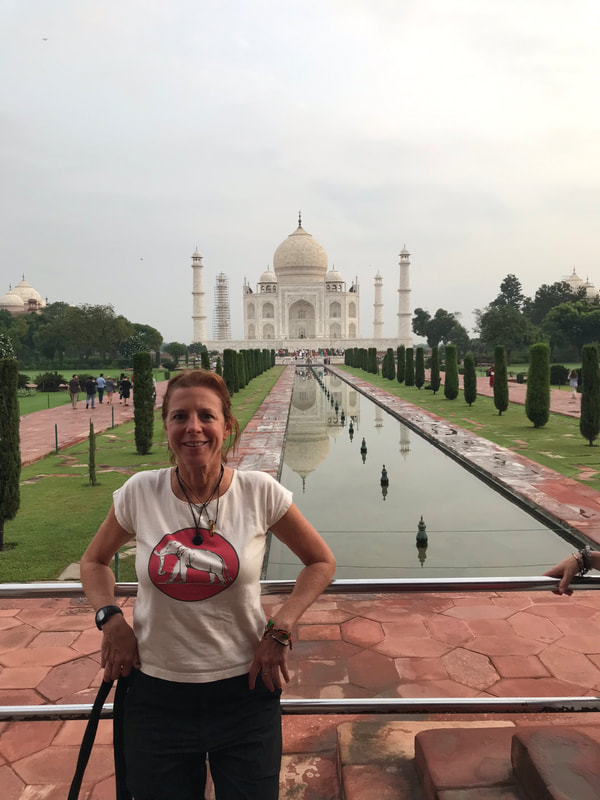





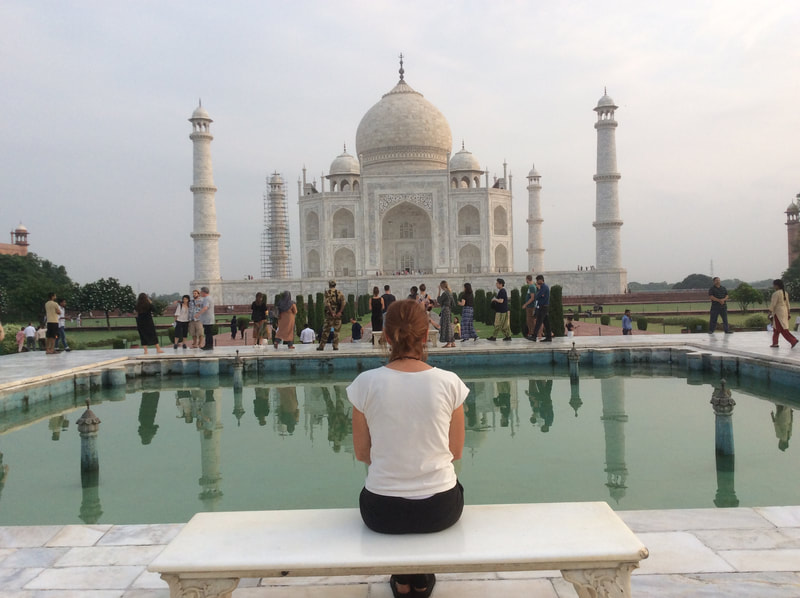
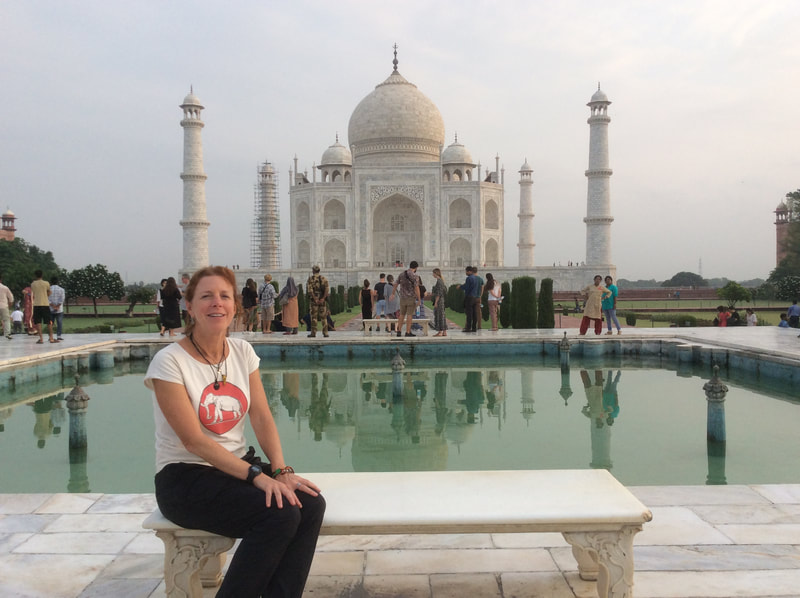



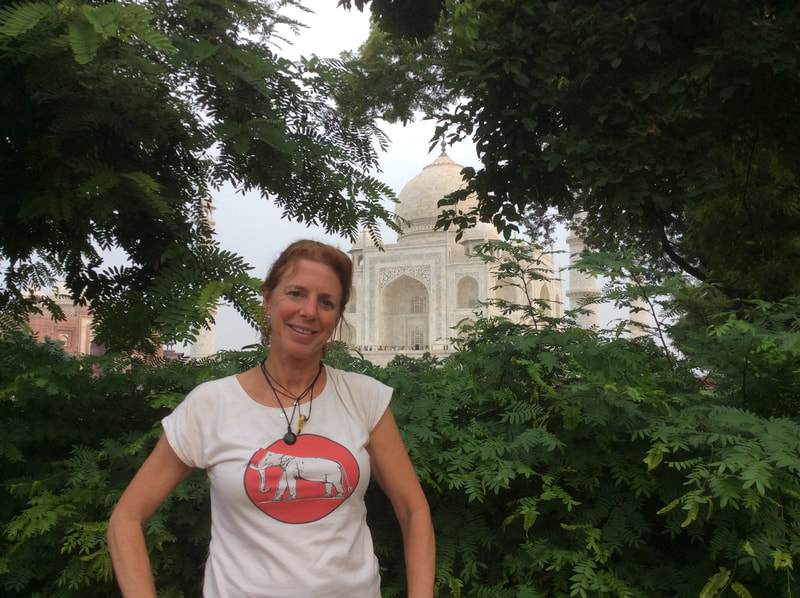
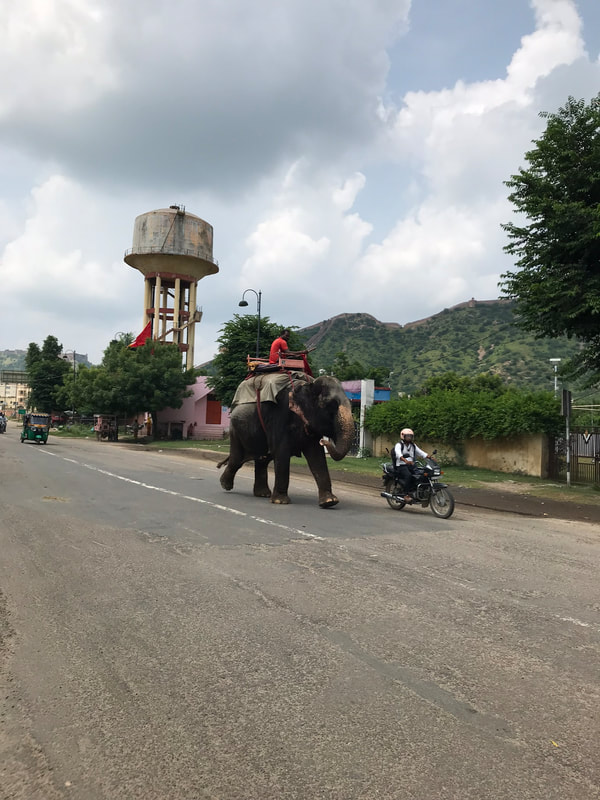





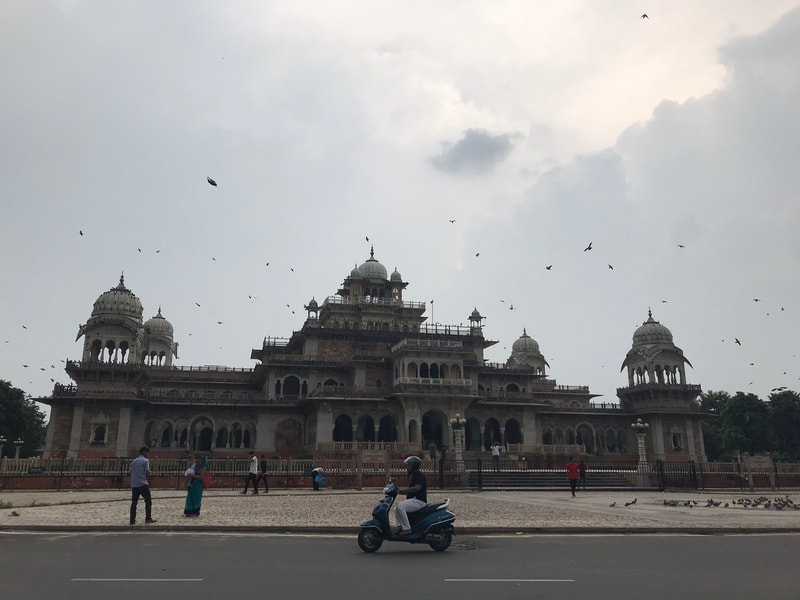




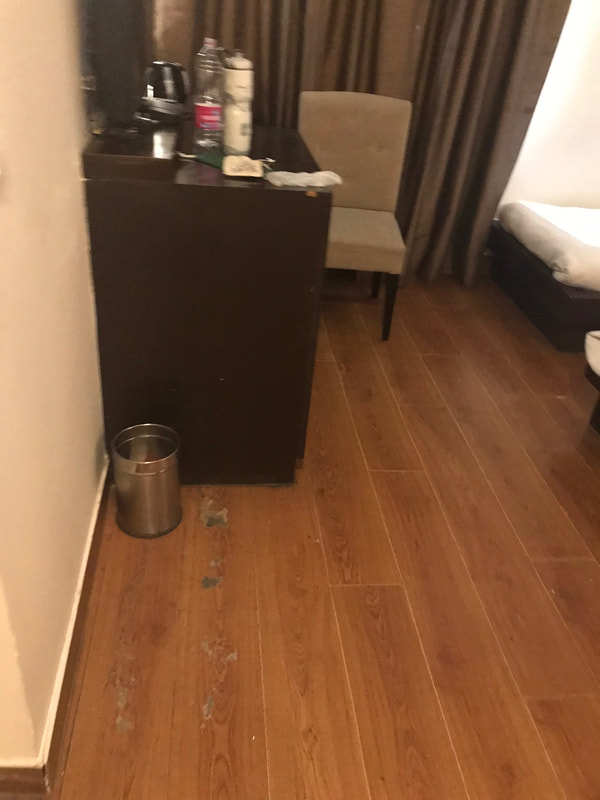
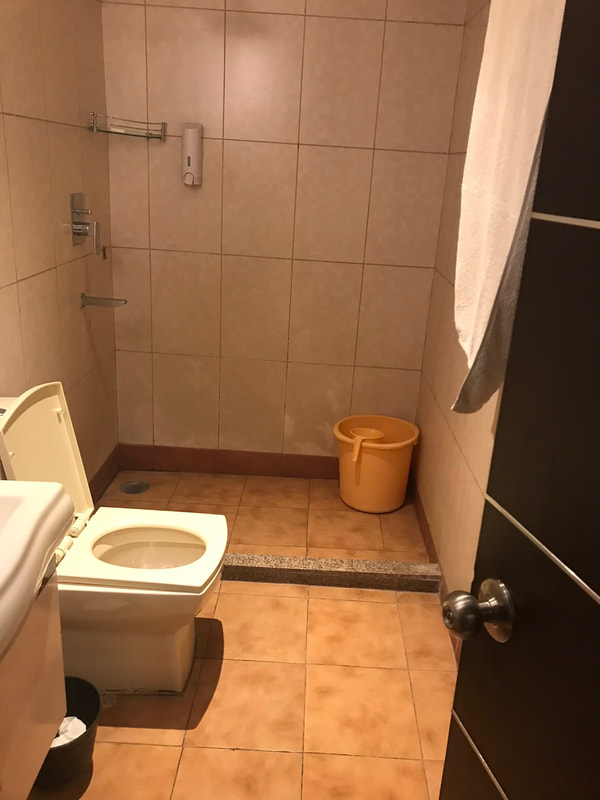
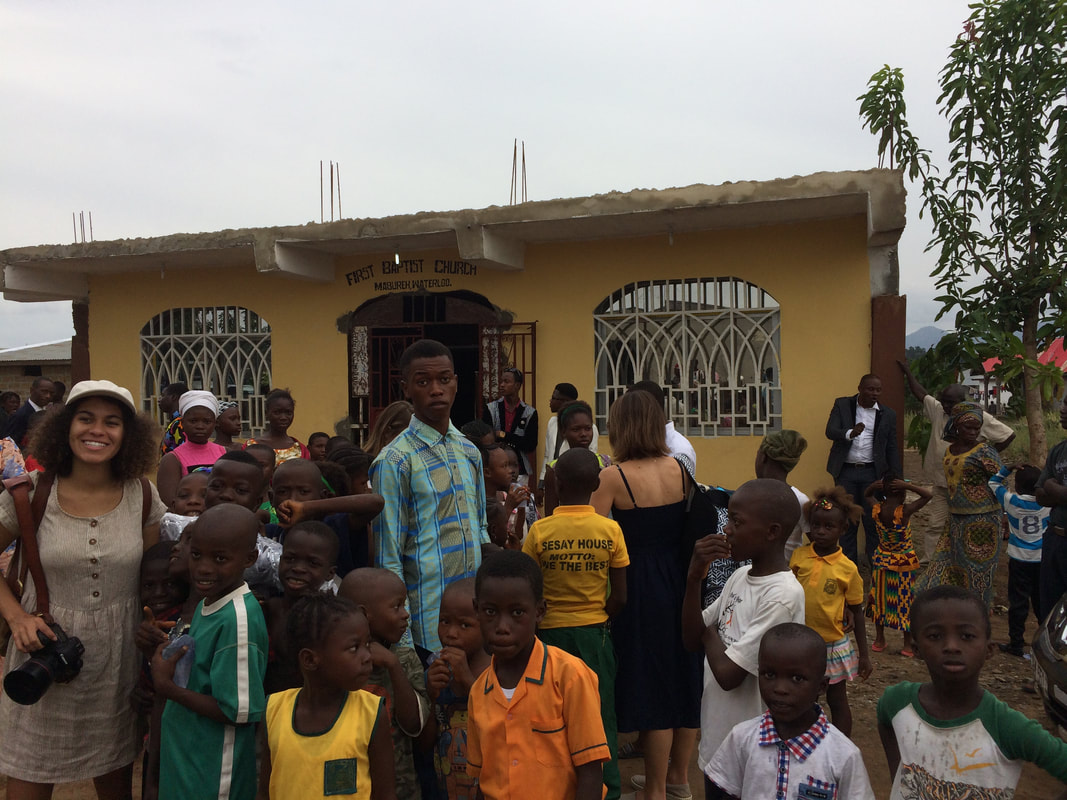
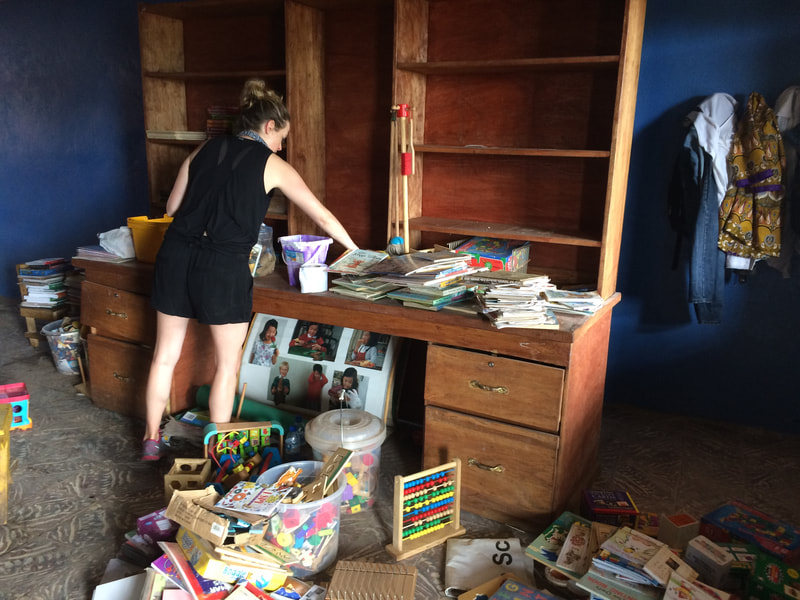
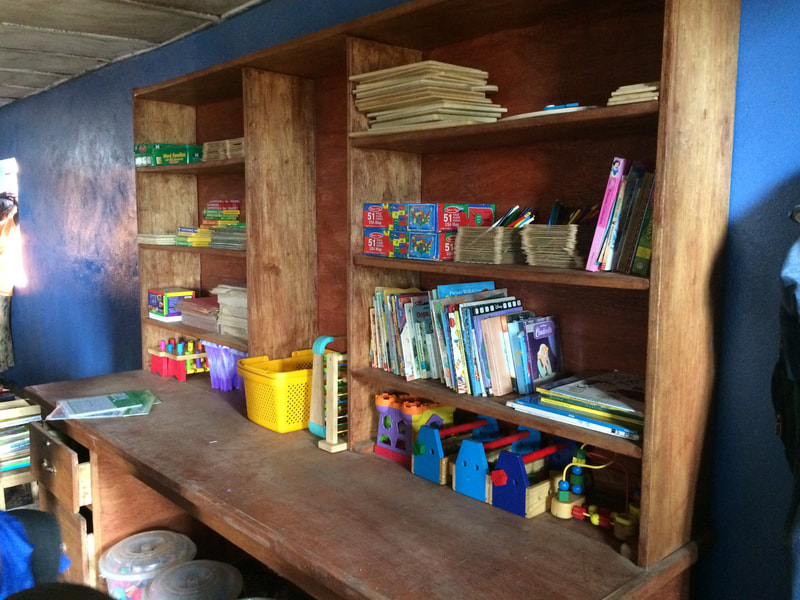


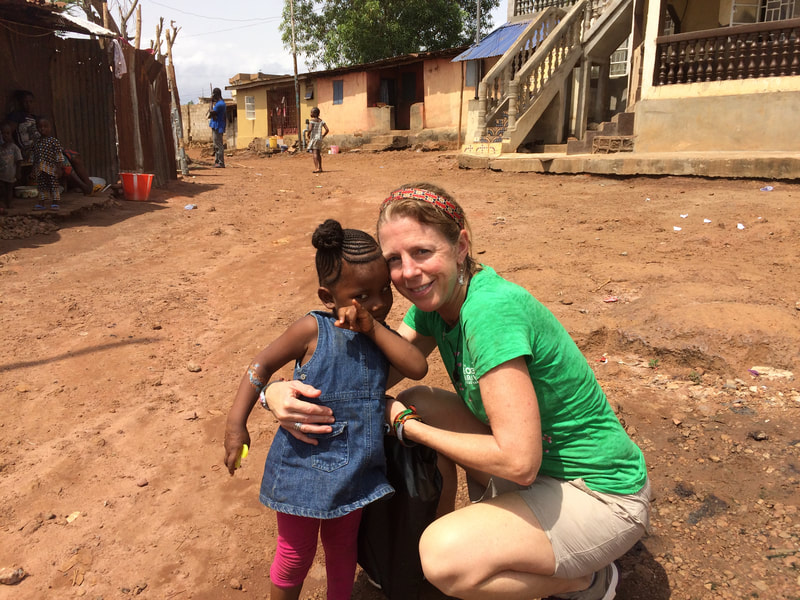


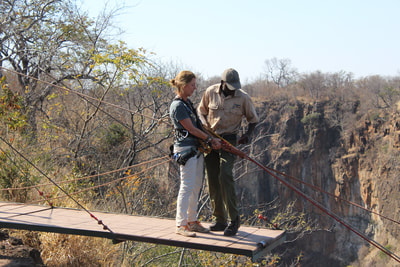


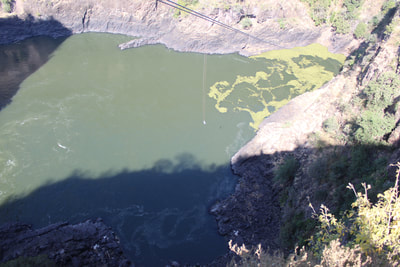
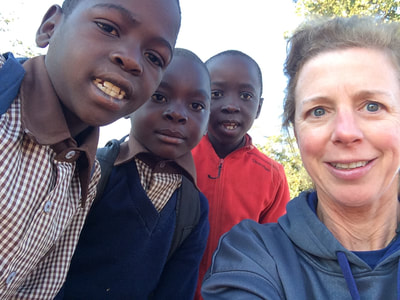




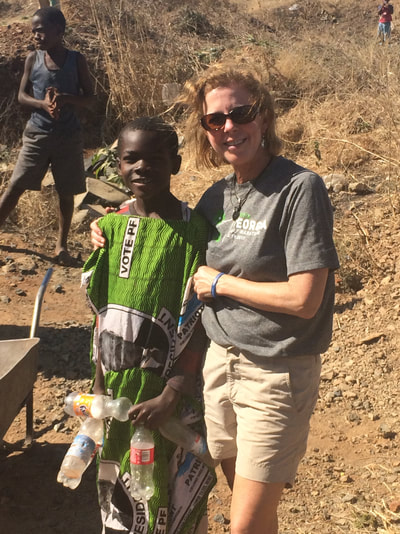
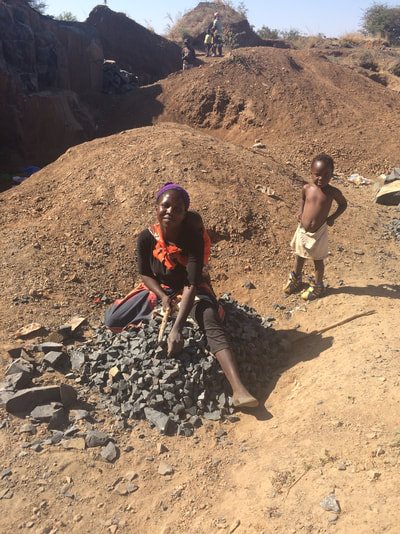

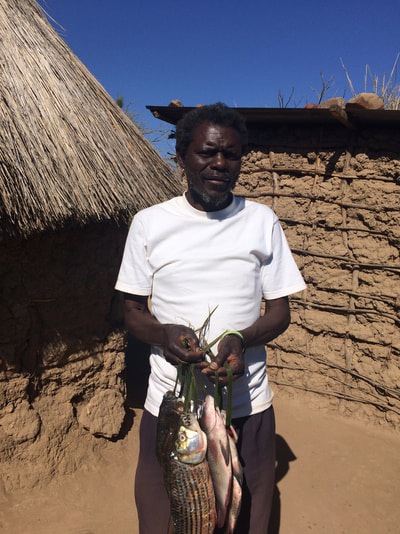
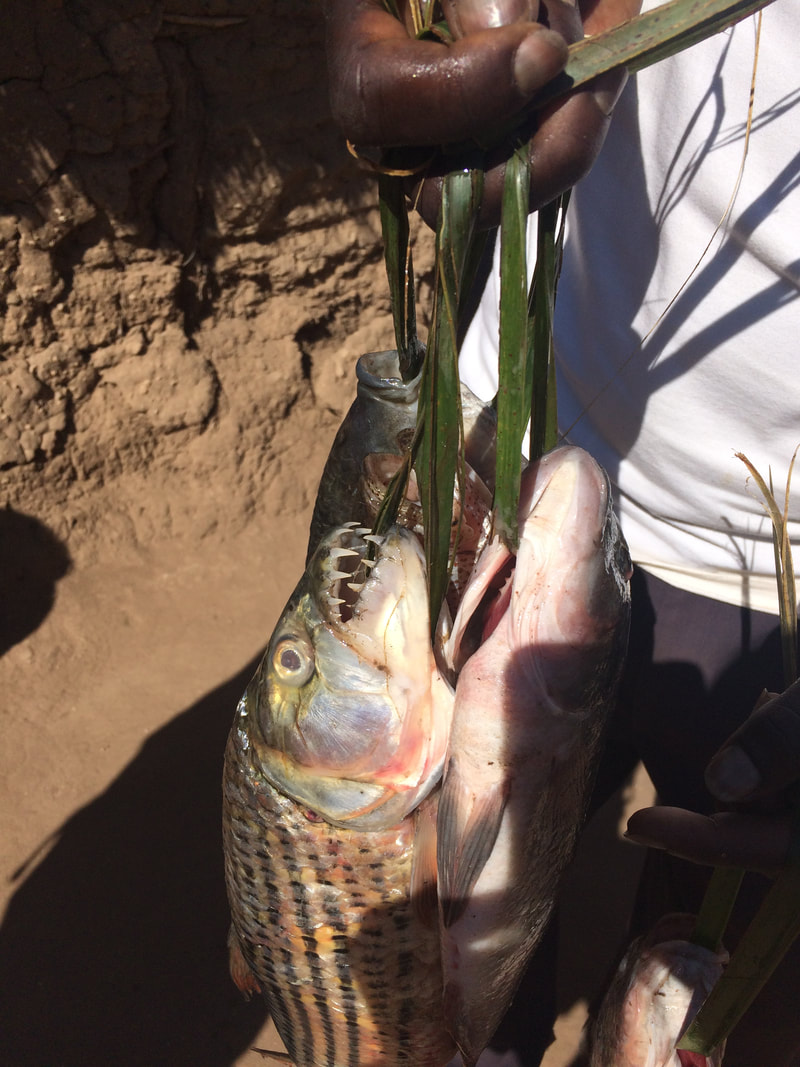
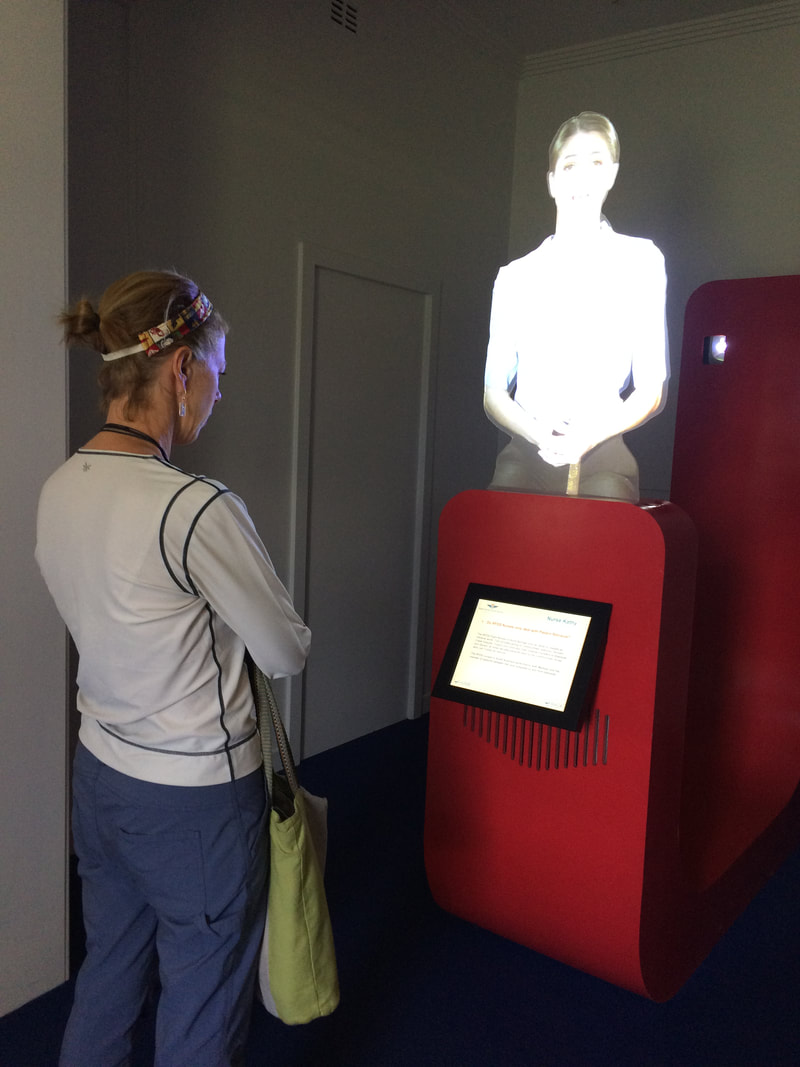

 RSS Feed
RSS Feed
